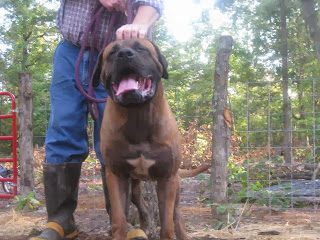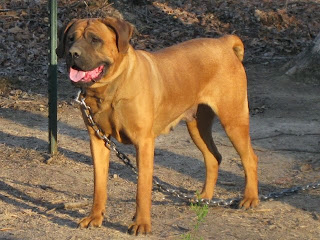Call: (573)783-2461
E-mail: 1tosadog@gmail.com
Tosa Inu Puppies Available 2014
TOSA'S (MASTER - GEN GOSASAKISOU) Imported from Kochi Japan
WE OFFER SHIP TOSA INU WORLDWIDE AT ARE COST
TOSA'S (MASTER - GEN GOSASAKISOU) Imported from Kochi Japan
PEDIGREE REGISTERED WITH (FCI),(AKL),(JKC)
SIRE: (JKCSIRE: 87TH. TOSA KENRYUU GO SASAKISOU TOSAHO
DAM: HANAKO GO SASAKISOU TOSAHO
| TOSA INU PUPPIES FOR SALE IN SOUTHEAST MISSOURI UNITED STATES OF AMERICA (MASTER - GEN GO SASAKISOU)-SIRE X (MASTER - OISHI) RARE BREED JAPANESE TOSA CHAMPION BLOODLINES TOSA KENRYUU GO SASAKISOU BLOODLINE BREED WITH YOKOSUNA CHAMPIONS IN PEDIGREE BLOODLINE Japaneses Puppie for sale To reserve a Puppies Litter 2014. See More Pictures on FaceBook Watching More Video On YouTube Call us For a Cute Little Puppy (573) 783 - 2461 We are The Breeder In Southeast Missouri ,United State Of America. The Tosa varies considerably in size, with the Japanese-bred dogs tending to be about half the size of those bred outside the country. The Japanese breed generally weighs between 80 and 135 pounds while the non-Japanese breeders have focused on dogs that weigh from 130 to 200 lb and stand 24.5 to 32 inches at the withers.[1][clarification needed] The coat is characterized by its short and smooth appearance and is often red, brindle, or fawn. Occasionally it can be a dull black, but this is somewhat rare. Maintenance of the coat is usually minimal. The Dogs this breed is Loyalty generally good with other pets and excellent with children in the family. Temperament is a stately, massive dog. The large head is broad with a rather abrupt stop. The muzzle is moderately long and squared-off. The black nose is large. The teeth meet in a scissors bite and the jaws are powerful. The small eyes are dark brown in color. The high-set ears are small and thin, hanging close to the cheeks. The neck is muscular, with a dewlap. The tail is thick at the root, tapering to a point and reaching to the hocks when the dog is relaxed. The feet are well padded with dark nails. The coat is short, dense and hard and comes in solid, brindle or multi-colored of red, fawn, apricot, yellow, black, black and brindle and black and tan. There is often a black mask and there may be small white markings on the chest and feet. We Breed the Tosa Inu. ... integrity that has made the Tosa a national treasure in. Japan. Selective ... Puppies for show and home companion/guardian. History Tosa Inu (dog) Token (fighting style dog) is the most feared and revered of all Japan's canine species. They have been spoken of and occasionally, mentioned in written Japanese lore for nearly 1000 years. The indengionous dog from Tosa Wan (Bay) in Kochi prefecture, located on the island of Shikoku in the Southern Japans, is known for it's extreme courage and tenacious athletic abilities in the fighting arenas of Japan. |
In it's purebred state the Kochi or Shikoku Inu is of Spitz linage. With upturned ears and a shaggy tail curled over its hindquarters, they resemble a small reddish brown Akita. In this state they were unequaled in Japan at the dogfight. However, when European and Western traders forced open trade with the Japanese, they also introduced many of their mastiff type fighting dogs in order to compete with the Japanese dog fighters. This particular dog and its style of fighting are deeply rooted in the traditions and culture of the ancient samurai warrior clans. They are the Sumo Wrestler counterpart in the dog world. And so with immigration of these mastiff fighters, the Japanese dogs were considerably smaller in size and strength and were unable to compete on equal terms.
Then in the first year of Kaei (1848) a resident from Tosa purchased a western dog (bulldog) from Kyushu and bred it with a pedigreed dog. It is said that their puppies were the forefathers of the present dogs. After repeated breed improvements, stronger, bigger and more capable fighting dogs were brought up as a result.
The peak of dog fighting history was between the end of the Meiji period and the beginning of the Showa period. During this time. a large number of great fighting dogs were produced. Fighting tournaments were held often and Tosa fighting dogs became very well known throughout Japan.
As Japan entered the theater of World War II, dog fighting, as well as raising and feeding of 150 lbs. canines became illegal and this already extremely rare dog was reduced to very near extinction. At this point a few of the most dedicated breeders smuggled what is said to have been the last remaining handful of this breed into Northern Japan to the island of Hokkaido where they hid them until the end of the war. After World War II, the Dogs was brought back to the Tosa Wan area and their breeding and the organization of legal dogfight tournaments were resumed.
Origin -
has been bred for hundreds of years in Japan. The country has a long history of dog fighting, beginning in the 14th century. It was developed between the period of 1868 and 1912 by crosses with the Kochi (a local Japanese breed), native Shikoku fighting dogs, with Western breeds such as the German Pointer, Mastiff, Great Dane, Bulldog, St. Bernard and the Bull Terrier. Tosas were often referred to as the "Sumo wrestler of the dog world." In Japan, the Tosa is considered a national treasure. Although dog fighting is now illegal in Europe, North America, and Japan, secret, illegal pit fights continue in remote rural regions of Japan, where the Tosa, at 66-88 pounds (30-40 kg.)—smaller than those bred in the West—is still used for fighting. The breed excels at Japanese-style dog fighting. Japanese dog-fighting rules in the last century demanded that dogs fight silently, without cowering, and the fought by these rules—relentlessly and silently.Is a rare breed, even in its native land and has only recently been introduced to the USA. Unfortunately, this breed is banned in some countries as a dangerous breed. It is definitely unsuitable for beginners, but with the proper socialization, handling and training, it can make a wonderful family companion. This massive dog excels at weight-pulling and makes a great watch and guard dog.
Grooming - easy to groom. An occasional brushing to remove dead and loose hair is all that is needed to keep the coat looking good. May not drool as bad as other mastiffs but, they do drool, especially when they get excited, hot or when they drink. This breed is a light shedder.
Today in Japan the this breed holds tightly to its place in Japanese culture and history.
We are ship worldwide from United State at are cost.






